The Emergency American Ships of World War I
One hundred years ago, a large emergency shipbuilding programme was underway right across the United States of America from the West Coast to the Great Lakes and the East Coast. The Congress of the United States of America voted to declare war against Germany on 6th April 1917, after many American ships had been sunk in the ‘declaration of unrestricted total submarine warfare and a sink on sight’ policy by Germany at the beginning of 1917. The U-boat terror claimed over 1.685 million tons deadweight of Allied ships in the first three months of 1917, around 700 ships sent to the bottom. The first American citizens had been lost in the sinking of the Cunard liner Lusitania in 1915, and now America had suffered more than enough of the German war machine, and the time for this great nation to retaliate was at hand. The prospect of millions of American G.I.s being sent to France to fight in the U.S. Army Meuse and Argonne campaigns, and being supplied by American cargo ships with food, ammunition, weapons and stores, called for a massive shipbuilding effort.
The United States Shipping Board (USSB) formed the Emergency Fleet Corporation (EFC) with huge amounts of capital to build over 1,800 standard ships in American yards. During the first six months of 1917, yards in the U.S.A. and other yards in the Far East produced 1.333 million tonnes deadweight of ships for the American war effort. A massive organisational and planning operation was underway to produce during 1918 and 1919 a colossal number of over 1,850 ships as the war was not expected to be over until 1920. Many designs were produced by American yards, with design numbers 1013, 1019, 1066, 1080 and 1133 producing around two hundred ships from West Coast shipbuilders, and given ‘West’ or ‘Western’ prefixes to their names. These engines ‘midships cargo ships averaged 5,600 grt and 8,600 to 8,800 dwt, with the ‘West’ versions being triple expansion steam engine propelled and the ‘Western’ versions being steam turbine propelled.
The most numerous types in the new fleet were around four hundred engines ‘midships coastal cargo ships produced to seven designs by shipbuilders on the Great Lakes and thus given ‘Lake’ prefixes to their names. These ships averaged 2,500 to 2,700 grt and 3,400 to 3,800 dwt, and could be used in British coastal convoys if they survived their once only voyage across the U-boat infested waters of the North Atlantic. An indication of the scale of this American shipbuilding effort can be gauged from the astonishing spectacle of 94 steel and wooden hulls launched from yards all across America on Independence Day, 4th July 1918, all in one day! Three new yards were also under construction or in operation at this time, with these new yards solely engaged in assembly work with components produced across America and brought by rail to the ‘Hog Island’ yard of the American International Shipbuilding Corporation (AISC) on the banks of Schuylkill river at Philadelphia, and also to a yard at Harriman in Pennsylvania and another yard at Newark Bay in New Jersey.
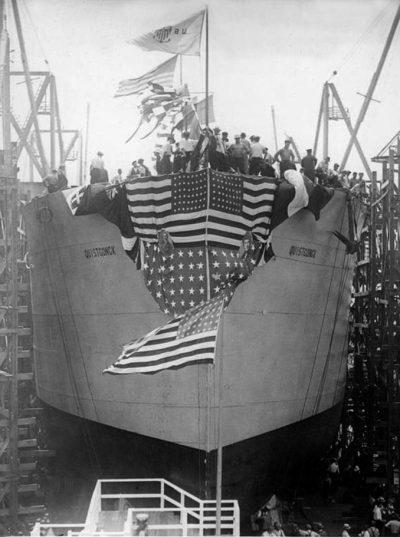
Philadelphia and the Hog Island Shipyard
The rise of Philadelphia to become the most important city in Pennsylvania is due to two men, William Penn (1644-1718), an English Quaker, and Benjamin Franklin (1706-1790) one of the Founding Fathers of the United States of America. Penn founded the city in 1682 as an experiment along ‘Quaker lines’ and the future capital of Pennsylvania Colony. Pennsylvania Colony had been named by Charles II of England after his dead friend, Admiral Penn, the father of the founder of Philadelphia. Franklin was born in Boston, but came to Philadelphia as a young man to establish a printing business and run a newspaper, the Pennsylvania Gazette. His work that advanced electrical science was awarded by two Honorary Doctorates from St. Andrew’s University in 1759 and from Oxford University in 1762. Philadelphia was a meeting place for the Founding Fathers of the United States of America, who signed the Declaration of Independence in 1776 and the Constitution in 1777. English colonies had also been founded in Maryland (Terra Mariae) and Virginia (Terra Virginiae), which also wanted their independence from the English Crown.
On the eve of the American Revolution against the British in 1775, the population of Philadelphia had grown to 21,500, the name of the city having come from the Greek for the ‘City of Brotherly Love’. After independence was granted to the new country, Independence Hall was built in the city with the preserved Liberty Bell from the Revolution on display in the green area outside Independence Hall. Philadelphia sent two companies of the Washington Grays volunteer soldiers in May 1861 to Washington (DC) at the start of the Civil War to help the Union side in the battles with the Confederates.
The American Centennial Exhibition opened in Philadelphia on 10th May 1876 on a site covering 236 acres. The steel and glass Main Exhibition Hall was the largest building in the world at the time of its construction, and was made of steel from local Carnegie steel plants. Bethlehem Steel was incorporated on 10th December 1904 in Philadelphia after the nucleus of the company opened for business a year earlier. Charles M. Schwab, a former U.S. Steel President, purchased an interest in the small Bethlehem Steel Company, and was made President of all Bethlehem Steel activities and he began to use the Bessemer process to manufacture steel in Pittsburgh, the other great city of Pennsylvania 350 miles away from Philadelphia. Philadelphia has thus had traditional industries such as shipbuilding, locomotives, manufacturing, oil refining, carpets, woollens, cottons, worsteds and sugar processing for over a century.
A site for the new Hog Island emergency shipyard was chosen between the Schuylkill (pronounced ‘School-kill’) river in the west and the Delaware river in the east and opposite the Philadelphia Naval Yard for no fewer than fifty building berths, seven wet docks and a fitting out basin. The yard was an assembly plant, using prefabricated parts and sub-assemblies produced by dozens of subcontractors, thus it was the first yard in the world to use modern prefabrication methods instead of traditional methods of building ships. The site today is that of Philadelphia International Airport, and the end of the slipways can still be seen protruding from the banks of the airport. It was planned to build 180 ships here to two designs, cargo ships to the 1022 design and troop transports to the 1024 design. However, 58 ships were cancelled after the end of the war, resulting in 110 cargo ships to the 1022 design, and a dozen troop transports to the 1024 design leaving the yard by the time the last ship was completed in January 1921.
The Hog Islander Ships
Type A Cargo Ship
The Type A design number 1022 was a no frills four hold cargo ship of dimensions of length 390.0 feet by moulded beam of 54.2 feet and depth of 27.6 feet. The ‘three island’ appearance had a bridge deck of 122 feet in length, fo’c’stle of 43 feet, and poop of 39 feet, with counter sterns and accommodation for a crew of 46. The design was of 5,750 grt and 7,830 dwt, with oil fired boilers and steam turbines by the General Electric Company of Schenectady in New York of 2,500 shaft horse power to give a service speed of fifteen knots. The first hull was laid down as Yard number 492 as Red Jacket, and launched one hundred years ago on 5th August 1918 as Quistconck by Mrs. Woodrow Wilson, wife of the President of the United States, and sailed from Norfolk (Va) on 3rd January 1919, seven weeks after the end of the war. The name Qusitconck is the name by which the Native Indians called Hog Island, as ‘Quist’ means hog and ‘onck’ means ‘a place for’. Hog Island was formerly a swampy, marshy island and good for fishing and hunting wild animals. A later hull, Yard number 1483, was laid down as Cimarron but completed under the name of Hog Island on 15th October 1919.
As Philadelphia is the traditional home of American independence and freedom, three of the Type A were given a ‘Liberty’ prefix to their names in Liberty Glo (Yard number 517), Liberty Land (Yard number 520) and Liberty Bell (Yard number 1507). Liberty Glo was laid down as Scooba on 12th June 1918 and launched as Liberty Glo on 14th June 1919 and sailed from the yard on completion on 2nd August 1919. Four months later on 5th December 1919, she struck a mine ten miles northwest of Terschelling on the coast of Holland which blew off her fo’c’stle and the forward two holds, leaving only number three bulkhead watertight beneath the bridge. Capt. Stousland ran her ashore and half of her cargo was saved, with his great tribute to the strength of the Hog Island built ship including how she had held together strongly after losing the forward half of the ship, making her as sturdy and strong as any ship afloat. A new forward half was built for her and she resumed trading as Liberty Glo, only to be aground off Holland again at Terneuzen on 28th February 1929, but was refloated two days later. She survived World War II sailing for the American Foreign Steamship Corporation across the Atlantic to Northern Europe and the Mediterranean, and was eventually broken up in November 1950 at Baltimore as North Glo.
Seven of the Type A became marine losses during the inter-war years:-
- Colthraps on fire and burnt at Pensacola on 5th September 1922 and broken up.
- Brush (laid down as Catalpa) wrecked off Cape Arago on 26th April 1923 while owned by the North Atlantic and Western Steamship Co. Inc. of Boston.
- Conejos missing and presumed lost in the Black Sea in December 1923.
- Casper wrecked on 14th December 1928 off Helsinki.
- Conehatta wrecked on 7th November 1929 near Hornefos in Sweden.
- Coldwater on fire after a collision and burnt off Cape Hatteras in 1933 while owned by the South Atlantic Steamship Co. Inc.
- Commack scrapped in 1937, cause unknown.
Kishacoquillas was laid down as Sebethe but was the only one of the Type A to be completed as a tanker, owned by the Kishacoquillas Steamer Corporation Inc of New York and trading with molasses in bulk. She was renamed Comol Rico in 1939 and was torpedoed and sunk in 1942.

There were thus 103 Type A still in service on the outbreak of war in September 1939, of which 52 became war losses. None of the ‘Hog Islanders’ had been completed before the end of World War I, but they showed their inestimable value in the convoys of World War II. They were owned by American Export Line, Alcoa Steamship Company, Moore and McCormack Company Inc., American Foreign Steamship Corporation, Lykes Brothers, Delta Line, Kellogg Steamship Corporation, American Coast Line Inc. and many other American shipping companies. Robin Moor was shelled, torpedoed and sunk 750 miles west of Freetown by U69 on 21st May 1941 almost six months before the United States of America entered the war. She had been laid down as Shetucket and completed as Nobles at Hog Island, and sold in 1940 to the Seas Shipping Co. Inc. of New York and renamed Robin Moor. She was carrying a commercial cargo from New York via Cape Town to Mozambique and had ‘U.S.A.’ in very large bold letters on both sides of her hull and was clearly a neutral ship. The sinking caused a political incident in her home country and was another step on the route to America entering the war.
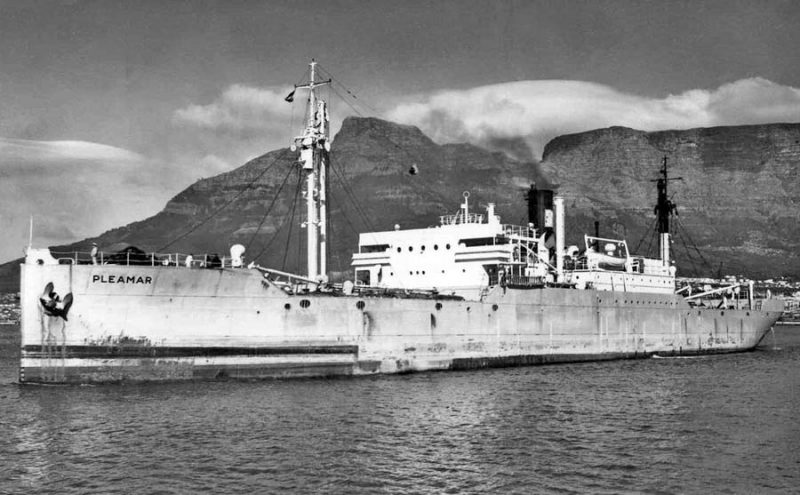
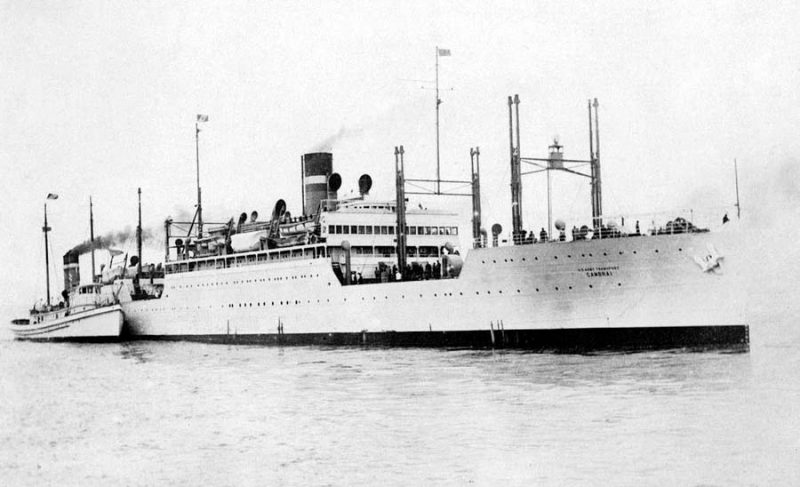
City of Flint was completed at Hog Island on 28th February 1920, having been laid down as Collingdale, and had an interesting war career. The citizens of Flint (Michigan) had raised much money during ‘Liberty Loan’ initiatives and the ship was named in their honour. She was being operated by United States Lines and allocated to U.S. Army cargo requirements, and was one of the rescue ships at the scene of the sinking by U30 of the Donaldson Line passenger liner Athenia on the day of the outbreak of war, 3rd September 1939, and rescued over two hundred survivors. One month later on 9th October she was en route to a British port with a cargo of tractors, grain and fruit when she was stopped by the German pocket battleship Deutschland, which declared her cargo as contraband and put a German prize crew on board to sail her back to Germany. However, the Royal Navy blockade forced her to put into Tromso for water, arriving on 20th October 1939. She was given 24 hours to leave by the Norwegian Government, and she sailed to the Russian port of Murmansk, arriving on 23rd October. After five days of holding the German prize crew under arrest, the Russian authorities put them back on board, and City of Flint sailed for Haugesund, where she was refused entry by the Norwegian Government but entered port anyway as a Royal Navy warship was nearby. A Norwegian minelayer then put thirty armed sailors onboard and arrested the German prize crew, and restored Capt. Guinard to her command. She discharged her cargo at Bergen and returned in ballast to an American port. City of Flint was later torpedoed and sunk by U575 in the North Atlantic on 23rd January 1943.
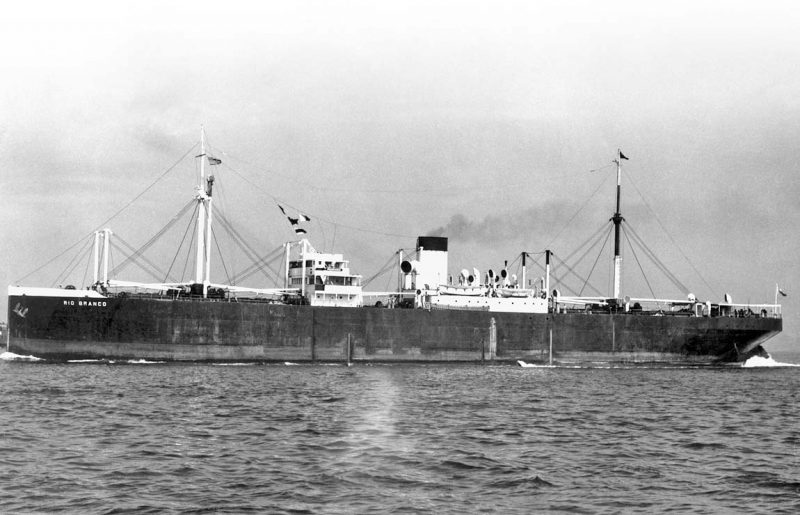
Nine Type A crossed the Atlantic on purchase in 1941 by the Ministry of War Transport (MOWT) and were renamed with ‘Empire’ names:-
- The first Type A, Quistconck, became Empire Falcon and survived the war to sail for the Whitby shipowner of Rowland and Marwoods Steamship Company as Barnby until 1952, and she was later scrapped at Troon in March 1953 as the Greek owned Mariandrea.
- Coahoma County became Empire Hawk and a war loss.
- Liberty Bell became Empire Mahseer and a war loss.
- Sacandaga became Empire Barracuda and a war loss.
- Labette became Empire Ortolan and survived the war to sail as Stanland for the Stanhope Steamship Co. Ltd. and was broken up in 1953 at Milford Haven as Alma.
- Clearwater became Empire Shearwater and survived the war to sail as St. Jessica for the South American Saint Line and was broken up in late 1958 at Istanbul as the Turkish owned Karsiyaka after engine trouble and shaft damage.
- Conness Peak became Empire Razorbill and survived the war to sail for Williamson & Co. Ltd. of Hong Kong and later for Greek owners as M. Xilas until she sank on 13th July 1947 after a fire in her rice cargo at Kohsichang in Thailand.
- Jolee became Empire Flamingo and was sunk as a blockship at the Mulberry Harbour on 9th June 1944, with her forepart later salved in 1948 but sank off Cornwall en route to the breakers yard at Newport.
- Vaba was converted into a tanker in June 1921 at Curtis Bay (Maryland) and became Empire Dolphin and was scrapped at Briton Ferry in February 1947.
There were ten Type A still in service in 1960 after forty years of commercial and wartime service:-
- Sagaporack (Yard number 497) continued sailing as Midosi until broken up in 1961.
- Scitico (Yard number 516) continued sailing as Riga until broken up in 1961.
- Shinecock (Yard number 538) continued sailing as Barroso until broken up in 1961.
- Tulsa (Yard number 539) continued sailing as Formosa until broken up in 1961.
- Saguache (Yard number 499) continued sailing as Cantuaria until broken up in 1961.
- Jomar (Yard number 1514) continued sailing as Ile de Re until broken up in 1963.
- Shannock (Yard number 527) continued sailing as Pleamar until broken up in 1964.
- Schenectady (Yard number 511) continued sailing as Maua until broken up in 1967.
- Schoharie (Yard number 513) continued sailing as Misiones until broken up in 1969.
The last Type A was not broken up until 1971, having been completed as Scantic (Yard number 509) on 28th June 1919, and reached the breakers yard under the name of Rio Branco after a magnificent 52 years of peacetime and wartime service. The Type A were certainly built with very strong hulls, as they were intended only as short lived emergency ships.
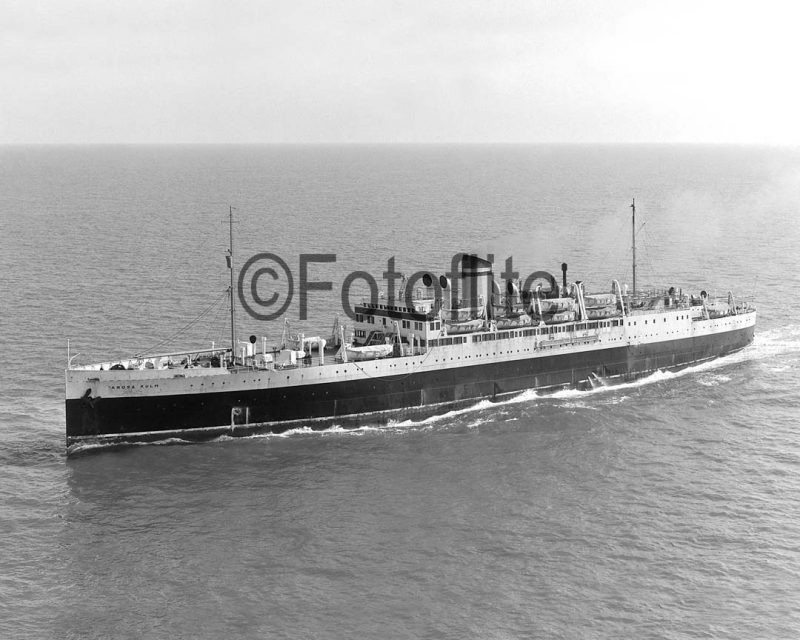
Type B Troop Transports
Twelve Type B troop transports able to carry four hundred troops and a crew of 250 were completed at Hog Island between October 1920 and January 1921 as Yard numbers 669 to 680. They had dimensions of length overall of 448.0 feet, moulded beam of 58.0 feet, depth of 36.0 feet and loaded draft of 31.0 feet. Gross tonnage was 7,555 and deadweight was 8,400, and they were powered by twin oil fired boilers and General Electric turbines of 6,000 shaft horse power connected to a single propeller to give service speeds of 17 to 18 knots. The turbines were built at plants in Schenectady in New York, Cleveland in Ohio, and Erie in Pennsylvania. The design had a raised fo’c’stle of length 82 feet, raised poop of length 80 feet, and central bridge deck of length 135 feet, with a profile symmetry between bow and stern, which later confused enemy submarines as to which direction the transports were steaming. These were well built and sturdy ships with cruiser sterns, with derricks on four goalpost masts, with topmasts on the two goalpost masts in front of and immediately behind the superstructure. Seven Type B were converted in 1924 for passenger and cargo service for United States Lines and carried up to one hundred and twenty passengers in comfort with a crew of seventy, and much cargo including 39,000 cubic feet of refrigerated cargo in their holds and shelterdecks. The remaining five Type B continued in military service throughout all of their long careers. The careers of the 7 that served as commercial passenger and cargo-liners is below:-

- Cantigny was laid down as Shohola and completed as Yard number 670 in August 1920, and was sold to United States Lines and renamed American Banker in 1924, and then sold to Anversoise Armement of Belgium in 1940 and renamed Ville d’Anvers. She survived the war to become City of Athens in 1946 and Protea for Panamanian Lines under the flag of Panama in 1948. She became the first liner of the newly formed Arosa Lines in 1952 on Transatlantic service until broken up in 1959 with almost forty years of magnificent service to her credit.
- Cambrai was laid down as Shohokin and completed as Yard number 669 in October 1920, and was sold to United States Lines and kept her name until she was renamed American Traveler in 1932, and was torpedoed and sunk in 1940.
- Somme was laid down as Siskowit and completed as Yard number 674 in November 1920, and was sold to United States Lines in 1924 and renamed American Importer, and then sold to Anversoise Armement of Belgium in 1940 and renamed Ville de Gand. She was torpedoed and sunk later in 1940.
- Aisne was laid down as Sisladobsis and completed as Yard number 675 in January 1921, and was sold to United States Lines in 1924 and renamed American Merchant, and then to Anversosie Armement of Belgium in 1940 and renamed Ville de Namur. She was torpedoed and sunk later in 1940.
- Ourcq was laid down as Sisseton and completed as Yard number 676 in January 1921, and was sold to United States Lines in 1924 and renamed American Farmer, and then to Anversoise Armement of Belgium in 1940 and renamed Ville de Liege. She was torpedoed and sunk in 1941.
- Marne was laid down as Sitkum and completed as Yard number 677 in December 1920, and was sold to United States Lines in 1924 and renamed American Trader, and then to Anversoise Armement of Belgium in 1940 and renamed Ville de Hasselt. She was torpedoed and sunk later in 1940.
- Tours was laid down as Skanawono and completed as Yard number 679 in January 1921, and was sold to United States Lines in 1924 and renamed American Shipper, and then to Anversoise Armement of Belgium in 1940 and renamed Ville de Mons. She was torpedoed and sunk later in 1940.
Military Service Type B Hog Islanders
U.S.S. Chaumont/U.S.S. Samaritan
Five of the dozen Type B Hog Islanders had long and interesting military careers as troop transports, submarine tenders, hospital ships and seaplane carriers. The U.S. Navy troop transport U.S.S. Chaumont (AP5) was laid down as Shope (Yard number 671) in November 1918, launched in March 1920, and completed on 15th December 1920 with assignment to the U.S. Army transport needs. She was named in honour of the U.S. Army Expeditionary Force headquarters at Chaumont in France. She was transferred on loan to the U.S. Navy on 3rd November 1921 and commissioned on a temporary basis, with permanent transfer to the U.S. Navy taking place on 6th August 1924. U.S.S. Chaumont served during the inter-war years from bases at Norfolk (Va) for Transatlantic service and at San Francisco for Trans-Pacific service. The latter called for trooping voyages to Manila via Honolulu, with three voyages during 1925/26 to Shanghai and one voyage to the Chinese port in each subsequent year.
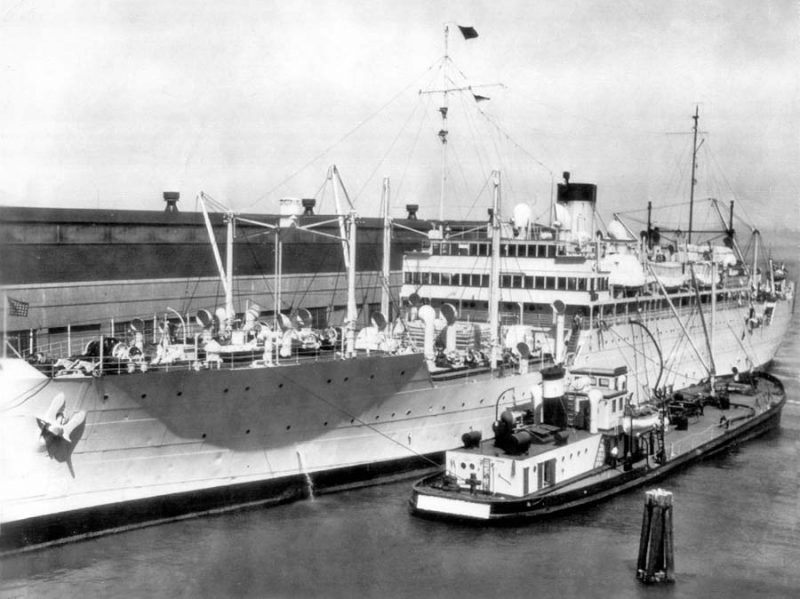
U.S.S. Chaumont carried military supplies, troops, naval expeditionary forces, and their dependents, as well as Congressional Committee members on tours of inspection. She made an important contribution to the U.S. Weather Map Service by the collection of meteorological information right across the Pacific. In August 1926, she returned to the U.S. Navy base at Norfolk (Va) via the Panama Canal and Annapolis for dry-docking and routine maintenance. She sailed via Guantanamo Bay back to the Pacific, and these voyages via the Panama Canal between East and West coasts became almost annual events. U.S.S. Chaumont sailed from Manila on 2nd February 1932 for Shanghai with one thousand troops of the 31st Infantry Regiment after Japanese forces attacked Chinese forces in Shanghai. An intensified effort by Japanese forces in September 1937 to take the city of Shanghai saw U.S.S. Chaumont transport the 6th Marine Regiment to Shanghai from Manila to reinforce the 4th Marine Regiment. She suffered two mishaps on this China service during 1936/37, being aground for a week at Chingwangtao, and also in collision with the Italian cruiser Raimondo Montecuccoli.
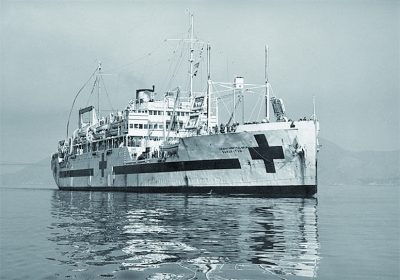
U.S.S. Chaumont was on one of her regular Trans-Pacific troop voyages from Hawaii to Manila when the Japanese attacked Pearl Harbour on 7th December 1941, and was diverted instead to Brisbane and then to Darwin to unload her troops and military supplies. She arrived back at San Francisco on 29th March 1942 via Brisbane, Sydney, Wellington and Balboa. She then made two trooping voyages to Honolulu from San Francisco, and was then assigned to Alaska duties from Seattle. She carried men and supplies to assist in the defence of the Aleutian Islands, and was decommissioned in August 1943 for conversion into a hospital shipe.
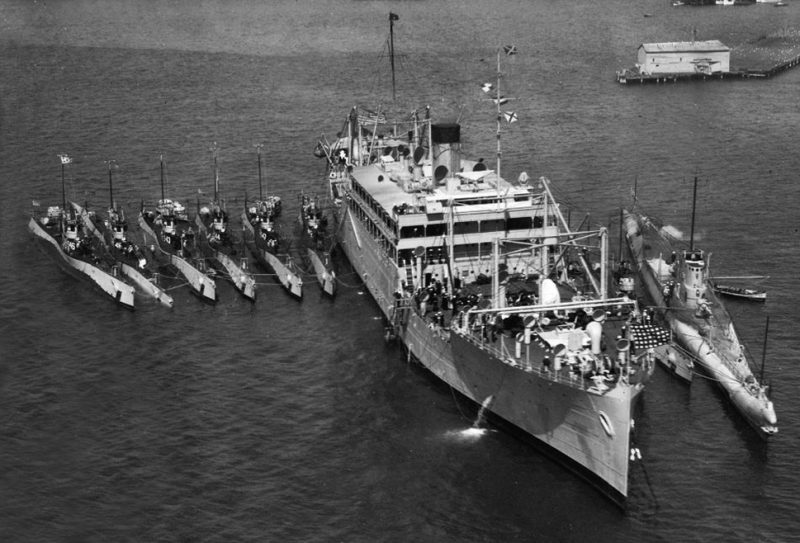
U.S.S. hospital ship Samaritan (AH10), renamed from U.S.S. Chaumont, recommissioned in March 1944 and made two voyages between San Francisco and Honolulu with passengers outward and patients homeward. She was at Kwajalein from 17th June to 1st July 1944 treating American casualties from the Battle of Saipan invasion, and arrived off Saipan itself on 8th July to embark patients for evacuation to Noumea in New Caledonia, returning for two weeks of service as a front line receiving hospital at Saipan. In August and September 1944, she was engaged on the evacuation of patients from Guam to Guadalcanal, and from Peleliu in the Russell Islands. After a brief refit at Espiritu Santo, she served as a base hospital at Ulithi until 16th February 1945. She arrived off the bitterly contested island of Iwo Jima on 20th February and sailed two days later for Saipan with 606 patients, with eight buried at sea on the second day out. She made two more voyages to Iwo Jima transporting badly injured patients to Guam. She was then engaged on transporting patients from the Okinawa campaign from 13th April 1945, receiving patients directly from the beachhead during the day and withdrawing at night to the safety of protected transport areas. She continued evacuating patients to Saipan from Okinawa until 1st July 1945, and then sailed for Pearl Harbour to evacuate patients from island hospitals to San Francisco. She then sailed from San Francisco on 10th September 1945 across the Pacific to Sasebo in Japan to provide hospital services to occupation forces until 15th March 1946. U.S.S. Samaritan was decommissioned at San Francisco on 25th June 1946, and laid up until she was sold for scrapping at the end of 1947.
U.S.S. Argonne
This U.S. Navy troop transport (AP4), submarine tender (AS10) and auxiliary (AG31) was laid down at Hog Island as Sinsinawa (Yard number 673) on 22nd November 1918, launched on 24th February 1920 and completed in August 1920. She was commissioned as U.S.S. Argonne on 8th November 1921 and sailed from Philadelphia sixteen days later with military and civilian passengers and a party of Senators for four ports in the Caribbean. She then sailed through the Panama Canal to Cavite in the Philippines to begin a long period of service as a troop transport, and as a submarine tender from 1924, in the Pacific during the inter-war years, and on the through trooping service from New York to Manila, returning periodically to the East Coast for maintenance.
U.S.S. Argonne was serving at Pearl Harbour on 7th December 1941 as flagship for Rear Admiral William L. Calhoun when hundreds of Japanese Zero aeroplanes from six Japanese carriers attacked the harbour. The anti-aircraft batteries on the U.S.S. Argonne (AG31) and onshore were in continuous firing from 0758 hours until the raid was over, and the auxiliary crew were engaged in the recovery of bodies from the water and in the treatment of wounded men from damaged and sunken warships. U.S.S. Argonne remained in Pearl Harbour as the Flagship of the Base Force until the Spring of 1942, when she was sent with salvage equipment, light trucks, medical supplies and ammunition to Canton to assist in the refloating of the troopship President Taylor aground off the Chinese port. She made a second voyage from Pearl Harbour to Canton in July 1942, and then sailed for Suva on Fiji to unload cargo on 21st July and also to Noumea on New Caledonia, arriving on 27th July 1942.
U.S.S. Argonne served as the flagship for Vice Admiral William F. Halsey Jnr. from 18th October 1942 at Noumea during the critical Guadalcanal campaign to halt the Japanese advances in the Solomon Islands. She served as the command ship for the Solomons campaign until the senior U.S. Army Generals and U.S. Navy Admirals were certain that Guadalcanal could be held, and until Vice Admiral Halsey shifted his flag ashore at Noumea. U.S.S. Argonne remained at Noumea until 16th June 1943, when she sailed for Auckland and then to Espiritu Santo in the New Hebrides, and arrived at Purvis Bay on Florida Island in the Solomons on 13th August 1943. She carried out many duties including repairs to damaged destroyers on Florida Island, and in the Russell Islands, until she sailed for Majuro Atoll in the Marshall Islands on 27th April 1944.
She then moved to Manus in the Admiralty Islands on 27th August 1944, and suffered damage when an ammunition ship blew up on 10th November 1944 just over half a mile away with fragments of steel and shrapnel falling on and around the ship, resulting in the destruction of a twelve inch searchlight, five transmitter aerials, and steam, fresh water and salt water lines ruptured. After repairs, she sailed for Kossol Passage in the Palau Islands in December 1944, and again suffered damage from an exploding depth charge accidentally set off from a sub chaser moored alongside. Damage was confined to the forward part of the ship in the print shop, radio repair shop, and galleys and pantries. She repaired her own damage and continued supporting U.S. naval forces in the Palau Islands until she moved to Leyte Gulf in the Philippines in February 1945 to support the Okinawa campaign. She remained in the Western Pacific until the end of hostilities in August 1945, and made one brief arrival in Japanese waters before her decommissioning at Mare Island Naval Shipyard on 15th July 1946. She was awarded one Battle Star for her Pacific war service, and was sold for breaking up at Boston on 14th August 1950.
U.S.S. ST. MIHIEL
This troop transport was laid down at Hog Island as Sinnemahoning (Yard number 672) and launched on 19th November 1919 and completed in August 1920 as St. Mihiel, named in honour of the Battle of St. Mihiel when the U.S. Army fought heavy enemy forces in France. After transferring to the U.S. Army Transport Service (ATS), she ran between New York and Antwerp with troops and supplies until January 1923 when the last U.S. troop contingent sailed home from Antwerp. She then ran on the New York to San Juan (Puerto Rico) and Panama trooping route until 1931, when she transferred to the ATS Pacific fleet at San Francisco for operation to Honolulu and via Panama to New York until laid up in November 1932. Apart from one voyage on civilian relief to Alaska in 1935, she remained laid up until recommissioned for U.S. Army trooping to Alaska shortly after the outbreak of the European war in September 1939.
U.S.S. Mihiel (AP32) was commissioned on 22nd July 1941 and continued in service to Alaska and the Aleutian islands, and participated in the occupation of the Attu in May 1943. She returned to San Francisco and made one voyage to Honolulu with troops in late September 1943, and then headed through the Panama Canal to Boston, where she was decommissioned and then converted into a hospital ship. She made her first voyage as USAHS St. Mihiel to North Africa on 10th May 1944 and served as a hospital ship and troop transport from the Mediterranean to American ports until she was laid up on 28th October 1947. After ten long years in lay up, she was broken up at Baltimore in 1957.
U.S.S. Chateau Thierry
This Type B Hog Islander was laid down as Skanamania on 25th January 1919 and launched on 24th December 1919 and completed in June 1920. She sailed on her first voyage as a U.S. Army troop transport from Baltimore to Manila in 1921, and on many more voyages across the Pacific from either New York or San Francisco. She sailed from New York for Greenland on 19th June 1941 to establish the first U.S. War Department base there, arriving off Narsarssuak in Greenland to establish the base Bluie West One as the major U.S. Army Navy and Army base on the island. U.S.S. Chateau Thierry continued operations between Brooklyn and Greenland, Iceland and Nova Scotia between September 1941 and early January 1942. She then made trooping voyages to Newfound-land and Belfast, returning with British soldiers to Halifax (NS) and New York. She then embarked troops and civilian passengers at Charleston (SC) for Eritrea in the Red Sea with calls at Bermuda and Cape Town.
She continued transporting troops across the Atlantic until she sailed from New York on 29th April 1943 for North African ports, and returned homeward with more troops from Oran on 10th June 1943. She then departed New York in early July for the invasion beaches of Sicily, and lay off the hotly contested Gela beaches on 10th July as the main assault began. She remained off Sicily for two days, using her five dual purpose guns and eight machine guns to counter heavy German air attacks, and to take on board Italian prisoners of war. She returned to Boston on 9th September 1943 to decommission, and returned to U.S. Army duties as a hospital ship for the remainder of the war. She was one of a dozen hospital ships that took part in the invasion of Southern France, and also saw service in the South Pacific. After final decommissioning, she was laid up for ten years until scrapped in 1957.
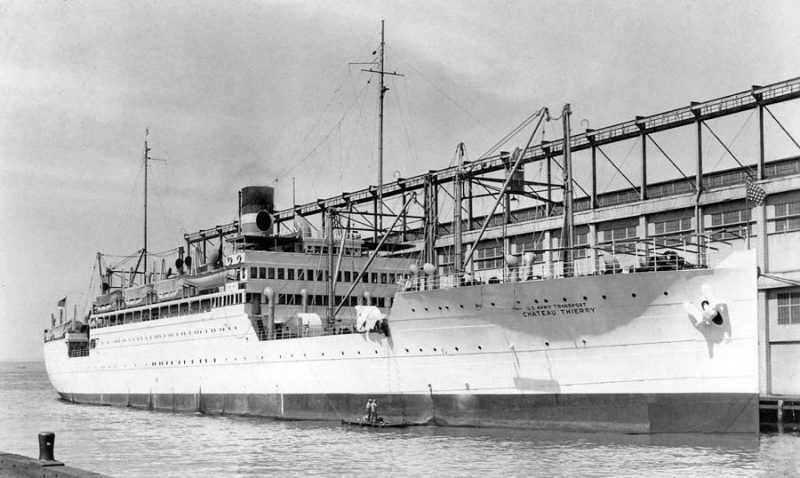
U.S.S. Wright
This type B Hog Islander was laid down as Skaneateles (Yard number 680) on 5th February 1919, launched on 28th April 1920 and completed in October 1920. However, she was completed not at Philadelphia but at Hoboken (New Jersey) as a contract was awarded to the Tietjen and Lang Dry Dock Company to convert her into a seaplane and balloon carrier. She was commissioned as U.S.S. Wright on 16th December 1921, and sailed from the New York Navy Yard to arrive at the Philadelphia Navy Yard on 22nd February 1922. She then sailed for Hampton Roads and Charleston for Key West in Florida, with her duties including acting as a tender for at least seven scouting seaplanes, as well as operating experimental kite balloons. During 1923, she participated in exercises in Carib-bean waters, and then operated from Hampton Roads in 1924 in operations from Virginia to the US Virgin Islands.
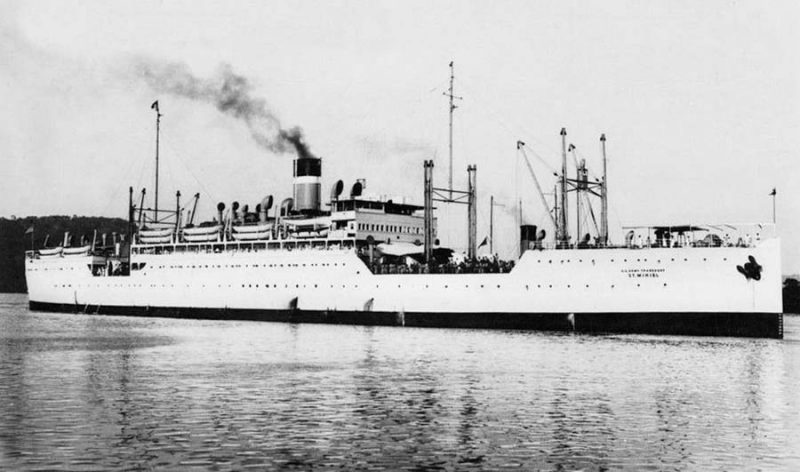
She operated from Pearl Harbour in the first half of 1925, and was then reclassified as AV1 for tendering scouting seaplanes, and worked four months of each year in the Caribbean from a base at Guantanamo Bay, and eight months of each year out of Hampton Roads in the Chesapeake Bay and Narragansett Bay areas. She transitted the Panama Canal in February 1932 to be based at San Diego at the NAS North Island base. She tended seaplanes in operations in the Pacific from Honolulu and Hilo Bay (Hawaii), Midway Island, and French Frigate Shoals, to Ketchikan and Juneau in Alaska. She became Flagship of the Seaplane Scouting Force based at San Diego in September 1941. She sailed from Pearl Harbour on 20th November 1941 for Wake Island for the construction of advanced bases on the island, as well as on Midway, Canton, Johnston and Palmyra Islands. She returned to Pearl Harbour the day after the Japanese attack, and then transported 126 Marines with their gear to Midway.
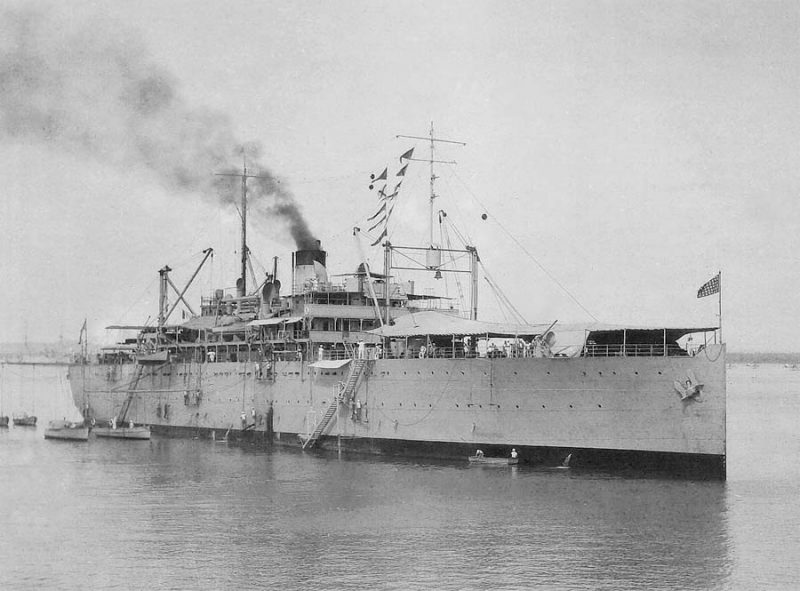
She sailed from Pearl Harbour on 2nd April 1942 for Tutuila (Samoa), Suva (Fiji), Espiritu Santo (New Hebrides) and Noumea (New Caledonia), and then on to Sydney (NSW), arriving on 26th April 1942. After visiting Melbourne and Fremantle, she returned to Pearl Harbour, she then spent the next six months on shuttle voyages to Midway and the other Pacific island bases, returning with bomber squadron crews. She sailed from Suva on 9th March 1943 by way of Pearl Harbour for Oakland (Cal.) for overhaul and alterations. She then embarked Marines for Espiritu Santo, and then proceeded to Rendova Harbour to tender seaplanes until 17th January 1944. She worked in the Solomons and then transported 264 officers and men to Tulagi harbour and Blanche harbour. She moved to Humboldt Bay in New Guinea on 23rd June 1944, and on to the Padiado Islands in Dutch New Guinea, as well as the Admiralty Islands, and tended U.S. and Australian seaplanes.
U.S.S. Wright arrived at Brisbane in late October 1944 to embark Rear Admiral Robert O. Glover along with 64 officers and 204 men to become the flagship of Service Squadron 7, Pacific Fleet and a new designation of AG79. She sailed for New Guinea and then proceeded via Humboldt Bay to Leyte on 3rd February 1945, having been renamed as U.S.S. San Clemente during the voyage. She became the nerve centre and base of the Pacific Fleet Service Force based at San Pedro, Subic Bay and Manila Bay until the formal surrender of Japan on 2nd September 1945. She then sailed from Manila for Shanghai and remained at the Chinese port in support of U.S. Navy occupation forces until 7th April 1946. She was decommissioned at New York Naval Shipyard on 21st June 1946 after arrival from Pearl Harbour and San Francisco. This famous seaplane tender was sold for breaking up on 19th August 1948.

Postscript
In the one hundred years since this great Hog Island fleet was prefabricated, launched and completed, the maritime world has witnessed many World War II ship designs built in both Great Britain, Canada and the United States of America. All of these emergency designs were intended for only temporary use of at most a few years, and it is remarkable that one of the Hog Island Type A managed to complete 52 years of peacetime and war time service. The Type B troop transports also gave long service, with seven giving valuable use to the United States Lines in peacetime and wartime, and one continuing in service as a Transatlantic passenger liner for Arosa Line until 1959. The five Type B troop transports that remained in military use during all of their careers became famous for acting as flagships for heroic American admirals such as Vice Admiral William F. Halsey Jnr.
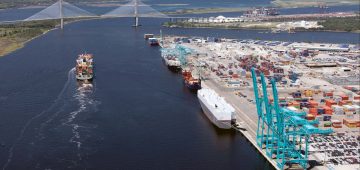



Comments
Sorry, comments are closed for this item